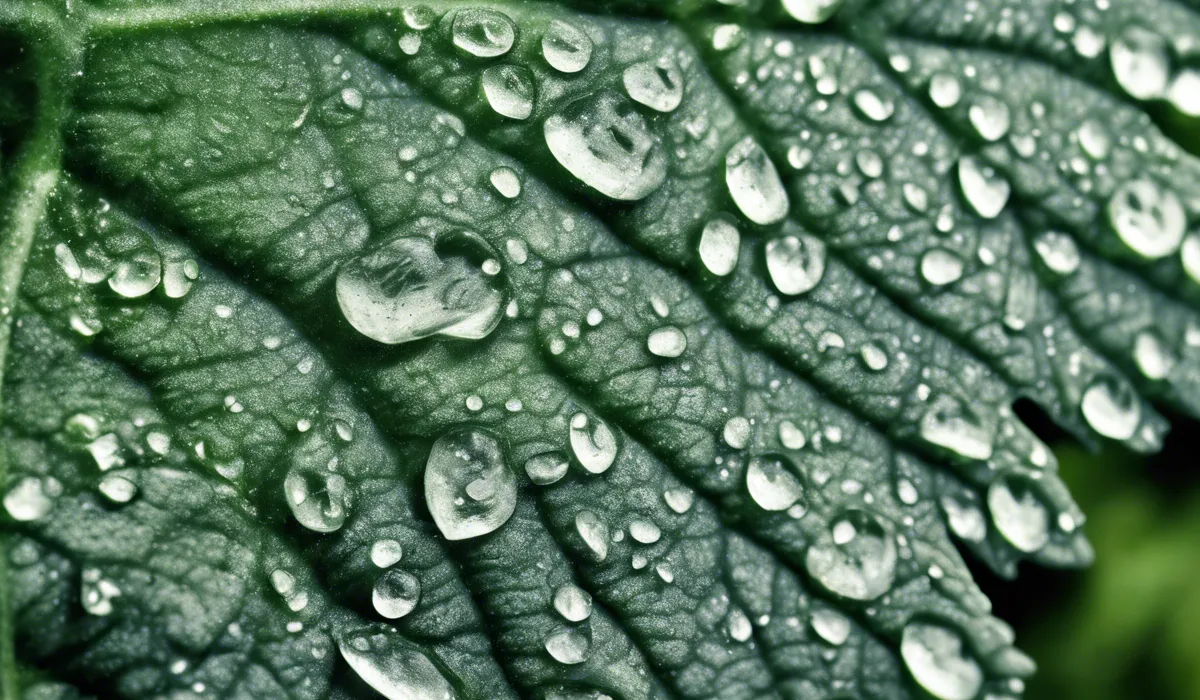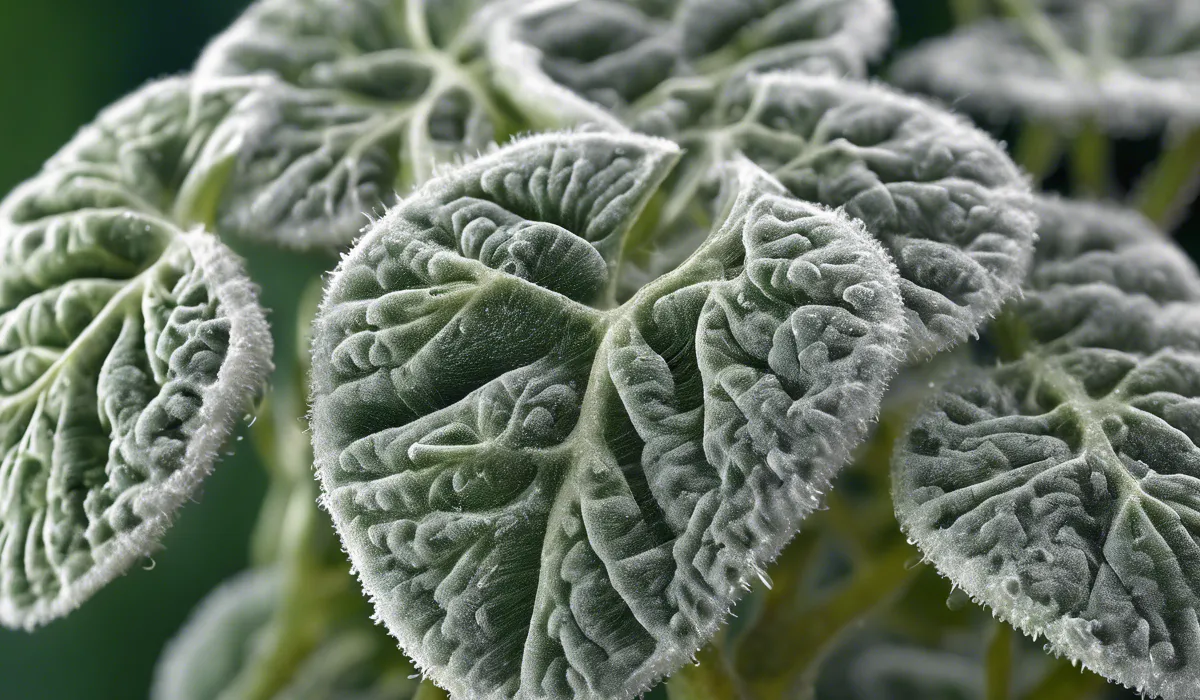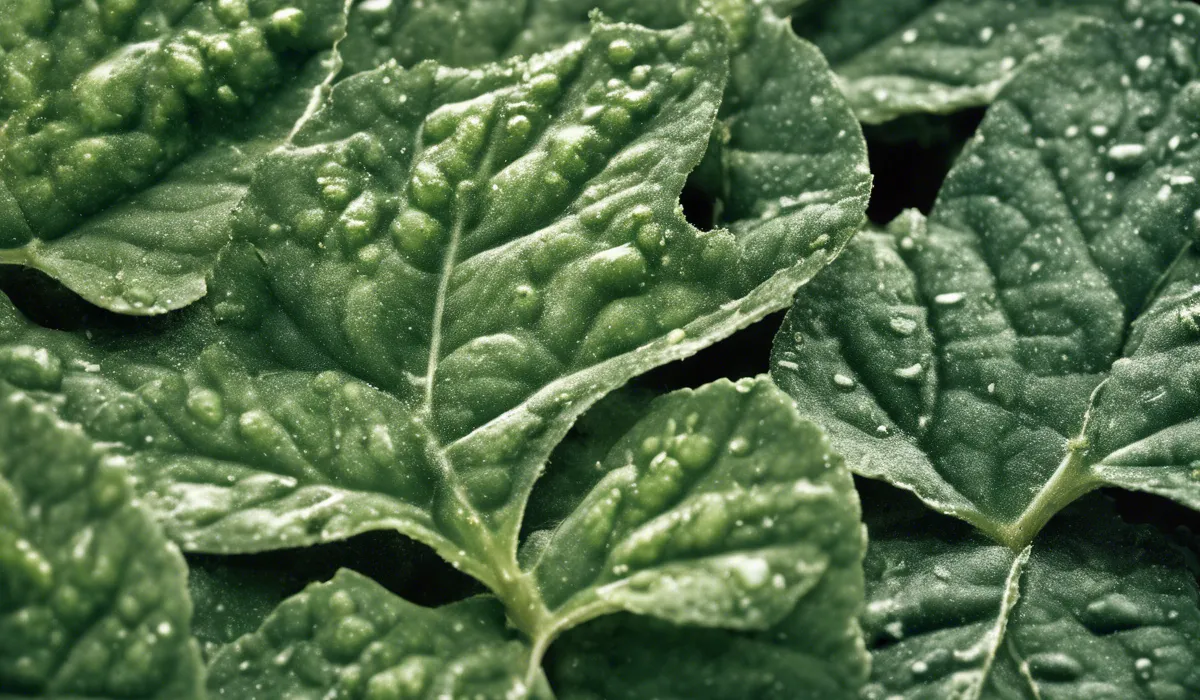Powdery mildew is caused by various fungal species that thrive in warm, dry climates with high humidity around the plants. Poor air circulation, overcrowded plants, and shade contribute to its spread.
Causes of Powdery Mildew: Environmental Factors

Understanding Humidity’s Role
Powdery mildew loves to thrive in places where the air is filled with moisture. High humidity, especially when combined with warm temperatures that are not too hot, creates an almost perfect home for this fungus.
When the air around plants is damp, but the soil is dry, it’s like a special invitation for powdery mildew to settle in. This happens a lot in climates where mornings are misty and nights cool off slowly.
The Need for Good Air Movement
Plants need to breathe, just like us. If they are all crowded together, the air cannot move around them well.
This lack of good air flow can make it easier for powdery mildew to spread. It’s important to give plants their space and to place them where the air can move freely.
This helps to keep their leaves dry and less welcoming to unwanted fungal guests.
Watering Techniques Matter
Water is essential for plants, but how you water them can make a big difference in whether powdery mildew will show up.
Overhead watering makes leaves wet, which is something powdery mildew fungi love. Instead of watering from above, try using a drip system or water at the base of the plants.
Keeping the leaves dry means you’re taking away one of the fungus’s favorite things.
Fungal Biology and Lifecycle

Meet the Powdery Mildew Fungi
Powdery mildew fungi are a group of pesky little organisms that show up looking like white or gray powder on plant leaves.
They are not just one kind of fungus. There are many types, and they can pick different plants to live on. These fungi are smart.
They know how to survive in all sorts of places and can even wait around when conditions aren’t right for them to grow.
Spreading the Spores
The spores of powdery mildew are like tiny seeds that can fly through the air. They spread easily, riding on the wind, hitching a ride on insects, or even tagging along on your garden tools or clothes.
Once they land on a plant, they need the right conditions to grow. This means they want it to be warm, but not too hot, and they really like it when the leaves are a bit wet.
Host Plants and the Mildew Lifecycle
Powdery mildew fungi are like unwelcome guests that come to stay on plants. These host plants give them food and a place to live.
The fungus spreads across the surface of leaves, stems, and sometimes even fruits. It takes what it needs from the plant, and if it’s not stopped, it can make the plant weak and look really sad.
Cultural and Agronomic Influences

Why Spacing Plants is Key
When you plant your garden, it might be tempting to put lots of plants close together. But this can lead to trouble.
Crowded plants mean less air flow and more humidity, which are things powdery mildew loves.
By giving plants enough room, you’re helping to make sure there’s good air flow and that each plant gets the light it needs to be strong and healthy.
Choosing the Right Plant Varieties
Some plants are like superheroes when it comes to fighting off powdery mildew. They have special powers that make them resistant to the fungus.
When you’re picking plants for your garden, look for these resistant varieties. They can help you win the battle against powdery mildew and keep your garden looking great.
The Impact of Nitrogen in Fertilizers
Fertilizers help plants grow, but if you use too much of a kind that’s rich in nitrogen, it can cause problems.
Nitrogen can make plants grow lots of soft, green leaves quickly, which might sound good, but it’s also what powdery mildew loves to eat.
It’s like setting out a feast for the fungus. Instead, use fertilizer in the right amount, and look for options that make plants strong but not too tasty for mildew.
FAQs About Causes of Powdery Mildew
What climatic conditions favor the development of powdery mildew?
Powdery mildew thrives in warm, dry climates with high humidity levels around the plants.
How does poor air circulation affect powdery mildew?
Poor air circulation can contribute to the spread of powdery mildew by allowing fungal spores to settle and grow on plant surfaces.
Does the proximity of plants influence the spread of powdery mildew?
Yes, overcrowded plants can promote the spread of powdery mildew by reducing airflow and creating microclimates with higher humidity.
Can shade lead to an increase in powdery mildew infections?
Shade can contribute to powdery mildew infections by creating cooler conditions that are conducive to fungal growth.
Are certain fungal species responsible for powdery mildew?
Yes, powdery mildew is caused by various fungal species within the order Erysiphales.
Final Thoughts
Powdery mildew arises from various fungi that prefer warm and dry conditions with high humidity near plants.
Factors such as inadequate air flow, dense plantings, and shaded areas exacerbate the problem, creating an optimal environment for this fungal disease to flourish.
